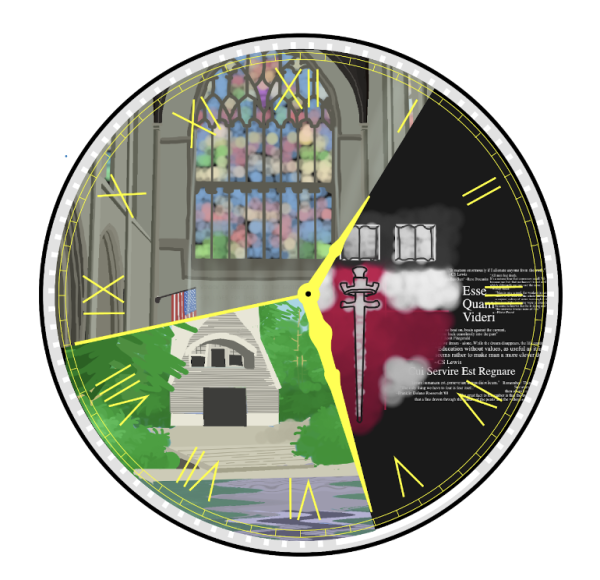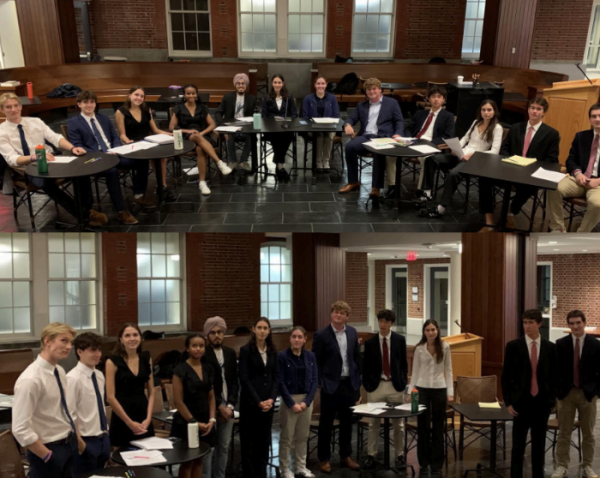It’s Time for Groton to Pay Its Fair Share
Today, Groton School, with its princely $380 million endowment, pays zero property taxes to the town. This state of affairs exists because the School, as a nonprofit, is exempted by the federal government from paying tax. Therefore, as many other educational facilities, Groton gives a relatively small amount of money to the local community.
The School voluntarily provides a $150,000 contribution to the town government. Groton School has increased its contribution to the town from $100,000 a few years ago, however, and has pledged to pay for each new land acquisition a sum equivalent to the property taxes formerly paid on the purchased land.
But this is a pittance compared to what we might owe on a property tax bill were schools not tax-exempt. According to Groton’s fiscal year 2016 Form 990 – the return filed by tax-exempt organizations –, the School’s land, property and equipment is worth a staggering $134,919,361. If that were taxable at the same rate as a house in the town of Groton – $18.26 per $1,000 of assessed value – we would have to pay nearly $2,500,000 worth of tax.
We, paying the town only 6 percent of our theoretical property tax, trail behind several nonprofits in the town, according to Barry Pease, a selectman for the town of Groton. These other nonprofits include the Seven Hills Pediatric Center, which pays 20 percent of its theoretical obligation; and the Groton Electric Light Department, which contributes a whopping 83 percent of its theoretical assessment. Lawrence Academy paid $56,000, 9 percent of its hypothetical obligation on $32 million worth of property, in fiscal year 2017.
It’s worth noting that we’re not the worst offenders in regard to paying our share. Deerfield Academy, for example, paid just under $145,000 on almost $200,000,000 worth of property in the 2016 fiscal year, along with a few smaller donations to community organizations.
That we do better than some schools doesn’t mean we can’t do better still. Without paying local taxes, the School uses the local police and fire departments, local roads, and even benefits from Groton’s public school system, among other services provided by the Groton town government. The cost of educating the children of faculty is notable among these, as the cost per student in the Groton-Dunstable district is over $14,000.
While many of these services are difficult to quantify without study, basic justice says that the School ought to pay a good deal of money to the town. In a situation where one entity possesses $380 million in financial reserves and is paying a smaller proportion of the value of its real estate than the average town resident, the question of fairness becomes an important one. Local residents should not be shouldering the costs of a wealthy institution’s use of public services.
To the administration’s credit, the School has provided too many resources to the community to fit in the column space given to this article. A cursory list includes use of Groton’s facilities to local groups without charge, volunteer work done by Groton students and faculty, the maintenance of conservation land, sizable contracts with (and patronage of) local businesses, and employment of a number of Groton residents.
Chief Financial Officer Arthur Diaz says that many of Groton’s philanthropic efforts are “really responsive to requests from the town,” often filling requests for funding of unusual expenditures by the town, such as a $25,000 training room for the fire department.
Regardless of moral obligation, though, the question becomes one of affordability. The two places the funding could come from are Groton’s endowment and the School’s annual operating budget.
The endowment, while large and growing, is treasured dearly by the School, which remains firm in its resolve to take from its endowment only a percentage to fund the operating budget. This conservative approach is designed so that the endowment can continue to grow over time without sacrificing School operations. (Our endowment also subsidizes tuition considerably for all students, so a reallocation of funds could prove unpopular.)
The other source of revenue is the School’s operating budget, drawing from which would necessarily mean difficult and perhaps ill-advised cuts to Groton programs. Getting money from donors to fund the town would not be feasible; Mr. Diaz says that “donors usually like giving money that they see is going to benefit the people at the school as opposed to go out the door” to the town government.
This difficulty in finding easy funding makes the problem difficult to resolve. With an endowment of $380 million, Groton is not incapable of paying somewhat more, but there are legitimate challenges to all potential revenue sources.
Groton has a responsibility to give back to the local economy, and this responsibility, while partially fulfilled through community engagement, is neglected somewhat in respect to paying for local services, even with the amount we already give. A contribution to the town of Groton reflecting the School’s reliance on the local community is not an unreasonable request. Thus, Groton School should determine the monetary benefit it receives from the town government and pay a voluntary contribution equal or surpassing its usage of town services.











Tom M • Sep 27, 2024 at 1:23 PM
If we make them pay tax, then all non-profits should pay tax. Why only them
Dan Von Kohorn • Jul 30, 2019 at 9:14 AM
The problem becomes deeper as the school buys the other residentially zoned houses, and starts building solar fields along Farmers Row. Groton School is being a bad neighbor by taking residential housing supply, building power stations in historic bucolic settings, and taking away the tax base from public education. If Groton School cared about Groton, it would pay $2.5m in real estate taxes to the town each year — and the sidewalks it installed would extend beyond where the road abuts the school. Sidewalks should be for everyone. Groton suffers because the Groton School exploits the tax code and the taxpaying people of the town.
Malik Jabati '15 • Sep 14, 2018 at 2:41 AM
Leo, this is an impressive article, and I am incredibly pleased that the Circle continues to be a place where though-provoking discussion is allowed to flourish. There are many just arguments for increased taxation, but I do not believe placing that burden on non-commercial educational institutions is one of them. Public and private universities throughout the country (with many billions of dollars worth of endowments) are tax-exempt, and for good reason. Education, whether from an elite boarding school or a struggling public school, is a public good that makes us all better off. You noted in your article that Groton subsidizes the education of all of its students; this is, in effect, a tax the school pays. Groton also opens up its facilities to the town and donates a significant sum each year to the town (as you also mentioned). There are definitely inequities at play in the educational system, especially at and concerning the Circle, but taxing some schools and not others risks bringing about a future where the provision of some of the world’s finest education is sorely disincentivized. And Groton already does pay taxes. The school is responsible for the payroll taxes of every faculty member and employee, as well as tax on income from activities not substantially related to prescribed educational tax-exempt purposes. I really enjoyed the article, Leo! I know the rest of your time on the Circle will be amazing.